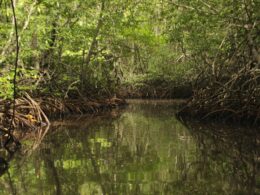A new study reveals that most projects under the Australian Carbon Credit Units (ACCU) Scheme fail to protect habitats critical for threatened species. Despite its goal to reduce emissions and sequester carbon, the scheme is largely concentrated in arid and semi-arid regions, which support habitats for just 6% of Australia’s threatened species, according to research published in ‘Nature Ecology and Evolution’.
Launched in 2011, the ACCU Scheme was originally designed to integrate biodiversity conservation into carbon farming initiatives. However, the world’s first national assessment of its kind, led by James Cook University researchers Adjunct Associate Professor Penny van Oosterzee and PhD candidate Jayden Engert, shows that species most in need of habitat restoration are the least likely to benefit from the programme.
“Where ACCU Scheme projects are most needed – in privately owned agricultural land that is cleared of habitat – they are small and few. Yet this is where most of Australia’s threatened species are,” Dr Penny van Oosterzee said, adding, “The bottom line is the carbon projects are not where threatened species are, so they are doing little for conservation.”
The findings hold significant implications for Australia’s legislated Nature Repair Market, a biodiversity initiative modeled on the carbon credits framework.
“Nature repair projects should learn from this and aim to protect existing vegetation in the populated and productive areas of Australia that would otherwise have been lost, and by restoring vegetation that has been lost in these areas of high species richness,” Dr van Oosterzee added.
“Speeding up the environmental law reform agenda is crucial. Nature repair projects should be underpinned by regulations that prevent further destruction and be aligned with national priorities for biodiversity conservation.”
Dr. van Oosterzee also warned that focusing on low-cost carbon abatement risks undermining biodiversity efforts. She emphasised the need for stronger environmental regulations to align restoration projects with national conservation priorities.
“There is a silver lining,” she noted, “In areas where ACCU Scheme projects do occur, they can complement National Park conservation and support some threatened species. About one-third of Australia’s 1,660 threatened species have geographic overlap with ACCU projects, and in some cases, the projects provide their only protection.”
The study highlights the importance of refining policies to ensure carbon credits and biodiversity markets effectively support conservation and climate goals.





















